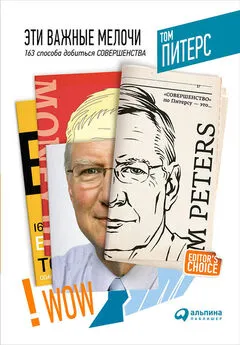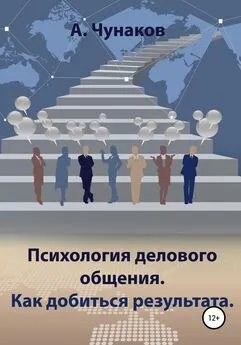Томас Лис - Психология переговоров. Как добиться большего
- Название:Психология переговоров. Как добиться большего
- Автор:
- Жанр:
- Издательство:Манн, Иванов и Фербер
- Год:2016
- Город:Москва
- ISBN:978-5-00100-067-9
- Рейтинг:
- Избранное:Добавить в избранное
-
Отзывы:
-
Ваша оценка:
Томас Лис - Психология переговоров. Как добиться большего краткое содержание
Эта книга написана не только для тех, кому нравится договариваться, но и для тех, кто переговоров избегает, а также для тех, кому сложно понять, угадал он или прогадал, вступив в переговоры. В ней нашли отражение результаты эмпирических исследований, которые авторы проводили на протяжении нескольких десятилетий, тщательно анализируя различные стратегии и проверяя их эффективность в различных условиях применения.
Книга будет полезна всем, кому приходится вступать в переговоры и вести их – как на работе, так и в повседневной жизни и в семье.
На русском языке публикуется впервые.
Психология переговоров. Как добиться большего - читать онлайн бесплатно ознакомительный отрывок
Интервал:
Закладка:
130
Belmi P., Neale M. Mirror, mirror on the wall, who’s the fairest of them all? Thinking that one is attractive increases the tendency to support inequality // Organizational Behavior and Human Decision Processes. – 2014. – № 124(2). – P. 133–149.
131
Carney D. R., Cuddy A. J., Yap A. J. Power posing brief nonverbal displays affect neuroendocrine levels and risk tolerance // Psychological Science. – 2010. – № 21(10). – P. 1363–1368. См. также выступление Эми Кадди (Amy Cuddy) на конференции TED: www.ted.com/talks/amy_cuddy_your_body_language_shapes_who_you_are.html.
132
Tiedens L. Z., Unzueta M. M., Young M. J. An unconscious desire for hierarchy? The motivated perception of dominance complementarity in task partners // Journal of Personality and Social Psychology. – 2007. – № 93(3). – P. 402.
133
Kiesler D. J. The 1982 interpersonal circle: A taxonomy for complementarity in human transactions // Psychological Review. – 1983. – № 90(3). – P. 185; Wiggins J. S. A psychological taxonomy of trait-descriptive terms: The interpersonal domain // Journal of Personality and Social Psychology. – 1979. – № 37(3). – P. 395; Wiggins J. S. Circumplex models of interpersonal behavior in clinical psychology // Handbook of research methods in clinical psychology / P. S. Kendall, J. N. Butcher (Eds.). – New York: Wiley, 1982. – P. 183–221.
134
Carson R. C. Interaction Concepts of Personality. – Oxford, UK: Aldine, 1969; Horowitz L. M., Locke K. D., Morse M. B., Waikar S. V., Dryer D. С, Tarnow E., Ghannam J. Self-Derogations and the Interpersonal Theory // Journal of Personality and Social Psychology. – 1991. – № 61(1). – P. 68; Horowitz L. M., Wilson K. R., Turan B. Z. P., Constantino M. J., Henderson L. How Interpersonal Motives Clarify the Meaning of Interpersonal Behavior: A Revised Circumplex Model // Personality and Social Psychology Review. – 2006. – № 10. – P. 67–86; Kiesler D. J. The 1982 Interpersonal Circle: A Taxonomy for Complementarity in Human Transactions // Psychological Review. – 1983. – № 90(3). – P. 185.
135
Blumberg S. R., Hokanson J. E. The Effects of Another Person’s Response Style on Interpersonal Behavior in Depression // Journal of Abnormal Psychology. – 1983. – № 92(2). – P. 196; Horowitz L. M., Wilson K. R., Turan B. Z. P., Constantino M. J., Henderson L. How Interpersonal Motives Clarify the Meaning of Interpersonal Behavior: A Revised Circumplex Model // Personality and Social Psychology Review. – 2006. – № 10. – P. 67–86; Markey P. M., Funder D. C., Ozer D. J. Complementarity of Interpersonal Behaviors in Dyadic Interactions // Personality and Social Psychology Bulletin. – 2003. – № 29(9). – P. 1082–1090.
136
Wiltermuth S. S., Tiedens L. Z., Neale M. A. The Benefits of Dominance Complementarity in Negotiations // Negotiations and Conflict Management Research. (В печати.)
137
Carroll J. S., Bazerman M. H., Maury R. Negotiator Cognitions: A Descriptive Approach to Negotiators’ Understanding of Their Opponents // Organizational Behavior and Human Decision Processes. – 1988. – № 41(3). – P. 352–370; Prietula M. J. Weingart L. R. Negotiation as Problem Solving // Advances in Managerial Cognition and Organizational Information Processing. – 1994. – № 5. – P. 187–213.
138
Tiedens L. Z., Unzueta M. M., Young M. J. An Unconscious Desire for Hierarchy? The Motivated Perception of Dominance Complementarity in Task Partners // Journal of Personality and Social Psychology. – 2007. – № 93(3). – P. 402.
139
Levitt S. D. Understanding Why Crime Fell in the 1990s: Four Factors That Explain the Decline and Six That Do Not // Journal of Economic Perspectives. – 2004. – № 18(1). – P. 163–190.
140
Hall J. A., Coats E. J., LeBeau L. S. Nonverbal Behavior and the Vertical Dimension of Social Relations: A Meta-Analysis // Psychological Bulletin. – 2005. – № 131(6). – P. 898.
141
Подробнее см.: Chartrand T. L., Maddux W. W., Lakin J. L. Beyond the Perception-Behavior Link: The Ubiquitous Utility and Motivational Moderators of Nonconscious Mimicry // The New Unconscious / R. R. Hassin, J. S. Uleman, J. A. Bargh (Eds). – New York: Oxford University Press, 2005. – P. 334–361.
142
Bernieri F. J. Coordinated Movement and Rapport in Teacher-Student Interactions // Journal of Nonverbal Behavior. – 1988. – № 12(2). – P. 120–138; см. также: LaFrance M. Nonverbal Synchrony and Rapport: Analysis by the Cross-Lag Panel Technique // Social Psychology Quarterly. – 1979. – № 42. – P. 66–70; LaFrance M. Posture Mirroring and Rapport // Interaction Rhythms: Periodicity in Communicative Behavior / M. Davis (Ed.). – New York: Human Sciences Press, 1982. – P. 279–298.
143
Van Baaren R. B., Holland R. W., Steenaert B., Van Knippenberg A. Mimicry for Money: Behavioral Consequences of Imitation // Journal of Experimental Social Psychology. – 2003. – № 39(4). – P. 393–398.
144
Van Baaren R. B., Holland R. W., Steenaert B., Van Knippenberg A. Mimicry for Money: Behavioral Consequences of Imitation // Journal of Experimental Social Psychology. – 2003. – № 39(4). – P. 393–398.
145
Lakin J. L., Chartrand T. L. Using Nonconscious Behavioral Mimicry to Create Affiliation and Rapport // Psychological Science. – 2003. – № 14(4). – P. 334–339; Van Baaren R. B., Maddux W. W., Chartrand T. L., De Bouter C., Van Knippenberg A. It Takes Two to Mimic: Behavioral Consequences of Self-Construals // Journal of Personality and Social Psychology. – 2003. – № 84(5). – P. 1093; Chartrand T. L., Bargh J. A. The Chameleon Effect: The Perception-Behavior Link and Social Interaction // Journal of Personality and Social Psychology. – 1999. – № 76(6), – P. 893; Cheng C. M., Chartrand T. L. Self-Monitoring without Awareness: Using Mimicry as a Nonconscious Affiliation Strategy // Journal of Personality and Social Psychology. – 2003. – № 85(6). – P. 1170.
146
Yee N., Bailenson J. N., Urbanek M., Chang F., Merget D. The Unbearable Likeness of Being Digital: The Persistence of Nonverbal Social Norms in Online Virtual Environments // CyberPsychology and Behavior. – 2007. – № 10(1). – P. 115–121; Blascovich J., Loomis J., Beall A. C., Swinth K. R., Hoyt C. L., Bailenson J. N. Immersive Virtual Environment Technology as a Methodological Tool for Social Psychology // Psychological Inquiry. – 2002. – № 13(2). – P. 103–124.
147
Maddux W., Mullen E., Galinksy A. Chameleons Bake Bigger Pies and Take Bigger Pieces: Strategic Behavioral Mimicry Facilitates Negotiation Outcomes // Journal of Experimental Social Psychology. – 2008. – № 44. – P. 461–468.
148
Wiltermuth S. S., Neale M. A. Master of the Universe versus the Chameleon: Comparing the Effects of Complementarity and Mimicry in Negotiation Behavior. – Working paper, Stanford Graduate School of Business, Stanford, CA, 2008.
149
Chartrand T. L., Maddux W. W., Lakin J. L. Beyond the Perception-Behavior Link: The Ubiquitous Utility and Motivational Moderators of Nonconscious Mimicry // Unintended Thought 2: The New Unconscious / R. Hassin, J. Uleman, J. A. Bargh (Eds.). – New York: Oxford University Press, 2005. – P. 334–361.
150
LaFrance M. Nonverbal Synchrony and Rapport: Analysis by the Cross-Lag Panel Technique // Social Psychology Quarterly. – 1979. – № 42. – P. 66–70.
151
Цит. по: Maddux W., Mullen E., Galinksy A.
152
Lerner J. S. Tiedens L. Z. Portrait of the Angry Decision Maker: How Appraisal Tendencies Shape Anger’s Influence on Cognition // Journal of Behavioral Decision Making. – 2006. – № 19(2). – P. 115–137; Frijda N. H., Kuipers P., Ter Schure E. Relations among Emotion, Appraisal, and Emotional Action Readiness // Journal of Personality and Social Psychology. – 1989. – № 57(2). – P. 212.
153
Подробнее см.: Harmon-Jones Eddie. Clarifying the Emotive Functions of Asymmetrical Frontal Cortical Activity // Psychophysiology. – 2003. – № 40(6). – P. 838–848; Harmon-Jones E., Segilman J. State Anger and Prefrontal Brain Activity: Evidence That Insult-Related Relative Left-Prefrontal Activation Is Associated with Experienced Anger and Aggression // Journal of Personality and Social Psychology. – 2001. – № 80. – P. 797–803.
154
Lerner J. S., Keltner D. Beyond Valence: Toward a Model of Emotion-Specific Influences on Judgment and Choice // Cognition and Emotion. – 2000. – № 14(4). – P. 473–493.
155
Lerner J. S., Keltner D. Fear, Anger, and Risk // Journal of Personality and Social Psychology. – 2001. – № 81(1). – P. 146.
156
Bodenhausen G. V., Sheppard L. A., Kramer G. P. Negative Affect and Social Judgment: The Differential Impact of Anger and Sadness // European Journal of Social Psychology. – 1994. – 24(1). – P. 45–62; Lerner J. S., Goldberg J. H., Tetlock P. E. Sober Second Thought: The Effects of Accountability, Anger, and Authoritarianism on Attributions of Responsibility // Personality and Social Psychology Bulletin. – 1998. – № 24(6). – P. 563–574; Small D. A., Lerner J. S. Emotional Politics: Personal Sadness and Anger Shape Public Welfare Preferences». – Paper presented at the Society for Personality and Social Psychology, New Orleans, 2005; Tiedens L. Z. Anger and Advancement versus Sadness and Subjugation: The Effect of Negative Emotion Expressions on Social Status Conferral // Journal of Personality and Social Psychology. – 2001. – № 80(1). – P. 86; Tiedens L. Z., Linton S. Judgment under Emotional Certainty and Uncertainty: The Effects of Specific Emotions on Information Processing // Journal of Personality and Social Psychology. – 2001. – № 81(6). – P. 973.
157
Siegman A. W., Smith T. W. (Eds). Anger, Hostility, and the Heart. – London: Psychology Press, 2013.
158
Fragale A. R. The Power of Powerless Speech: The Effects of Speech Style and Task Interdependence on Status Conferral // Organizational Behavior and Human Decision Processes. – 2006. – № 101(2). – P. 243–261.
159
Brescoll V. L., Uhlmann E. L. Can an Angry Woman Get Ahead? Status Conferral, Gender, and Expression of Emotion in the Workplace // Psychological Science. – 2008. – № 19(3). – P. 268–275.
160
Overbeck J. R., Neale M. A., Govan C. L. I Feel, Therefore You Act: Intrapersonal and Interpersonal Effects of Emotion on Negotiation as a Function of Social Power // Organizational Behavior and Human Decision Processes. – 2010. – № 112(2). – P. 126–139.
161
Sondak Harris, Neale Margaret A., Mannix Elizabeth A. Managing Uncertainty in Multiparty Negotiations // Handbook on Negotiation / W. Adair, M. Olekalns (Eds.). – North Hampton, MA: Edward Elgar, 2013. – P. 283–310.
Читать дальшеИнтервал:
Закладка:










